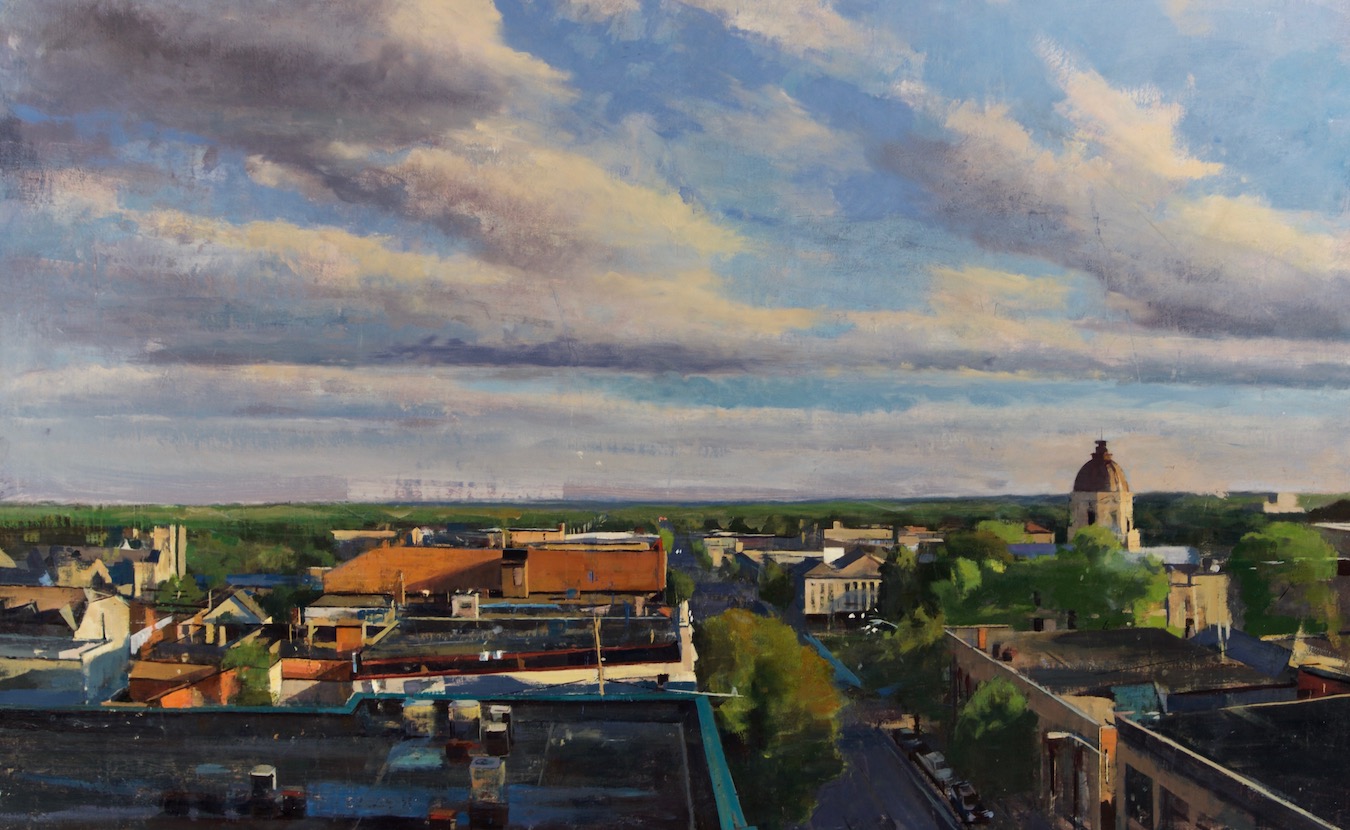A year ago, we announced that Limestone Post Magazine became an official 501(c)(3) nonprofit organization. For our one-year anniversary (and our fifth year overall), I’d like to take this opportunity to share the progress and challenges we’ve had in this most unusual year, as well as what we have planned.
First, though, Thank You!
I want to thank our readers who have donated to LP. We’ve received generous donations throughout the year, and in our first #GivingTuesday fundraiser last week we exceeded our goal by more than 200 percent!
Several businesses have also supported us through underwriting and in-kind sponsorships. And we have received our first grants.
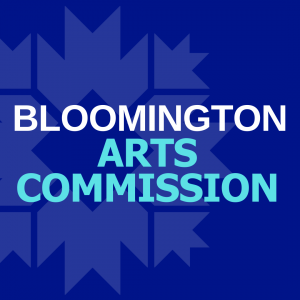
Limestone Post was one of 26 local organizations to receive an operating support grant this year from the City of Bloomington’s Bloomington Urban Enterprise Association and the Bloomington Arts Commission. We thank them for their support!
Limestone Post was the recipient of a grant from the Zone Arts Program offered by the Bloomington Urban Enterprise Association (BUEA) and the Bloomington Arts Commission (BAC). In addition to the members of BUEA and the BAC, we would like to thank Mayor John Hamilton and the members of the Bloomington City Council for making these grants available to us and others that support arts activities in the community.
We also received a grant, called the Arts, Cultural and Destination Marketing Organization Grant, from the Indiana Arts Commission, which was part of the Coronavirus Aid, Relief, and Economic Security (CARES) Act funding.
These grants have been critical in keeping our doors open — especially in helping to pay our contributors.
Building a sustainable nonprofit
As 2020 began, we continued our transition to a nonprofit organization. In addition to focusing on our mission to post in-depth editorial content, one of our first initiatives was to create a fundraising program. Most of our support revenue would come from three sources: individual donations, grant writing, and business sponsorships/underwriting. As mentioned, we’ve received gracious support from all three sources. But as it is with most not-for-profits, we rely on fundraising to sustain operations, so we’re grateful for your ongoing donations and support.
The onset of the coronavirus changed much of what we were working on, as it has adversely affected nearly every other business in town. Frontline organizations in healthcare and human services, such as Middle Way House and the Shalom Center (now a part of Beacon), as well as treasured local nonprofits like Buskirk-Chumley Theater, Cardinal Stage, and Bloomington Pride, have been hit hard by the pandemic.
Because we understand the struggles facing not-for-profits this year, in March we began devoting space we previously used for advertising to “Community Notices.” We’re pleased that a number of organizations have used this free ad space, including LIFEDesigns, Bloomington Academy of Film and Theatre, Monroe County Public Library, Midway Music Speaks, Sycamore Land Trust, Bloomington Playwrights Project, City of Bloomington Volunteer Network, Visit Bloomington, and WonderLab Museum. Since March, their “notices” have been clicked thousands of times by our readers, sending them to these organizations’ websites to learn more and, hopefully, support them.
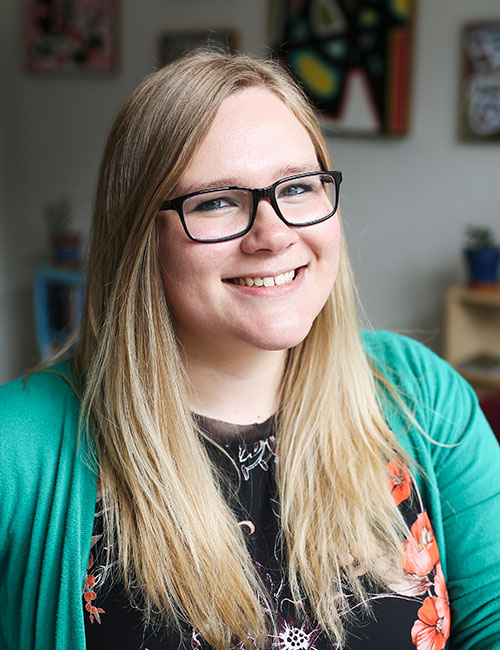
Lynae Sowinski is an LP co-founder and founding board member of Limestone Media. | Photo by Chaz Mottinger
Despite the challenges, we’ve taken the time to fulfill some of the responsibilities of running a sustainable nonprofit. One of those is building a strong board of directors. We’re looking to expand our board, but I’m lucky to have the leadership and guidance of our current board members. Allow me to introduce them:
Lynae Sowinski is a Limestone Post co-founder who served the first four years as LP’s Editorial Director. Although she moved to Georgia and now works for the University of Georgia, she still serves as a founding board member for Limestone Post and deserves all the credit for making LP such an editorial success (just ask our contributors!).
Fred Turner is a local attorney and longtime supporter of Limestone Post. We’ve been friends for more years than I can count, and I can always count on him for wise and sound advice.
Rebecca Hill, our newest board member, has extensive experience in the nonprofit sector. Not only has she served as executive director or on the board of many nonprofit organizations, she has also been a founding member of several, including the Indiana Medical Directors Association. Needless to say, her expertise has been invaluable to LP. Becky is also an accomplished freelance writer, so keep an eye out for her byline on an LP article!
Our board leadership and support from the community have kept us afloat and pointed in the right direction. For that, I’m extremely grateful. It motivates us to keep working hard to produce the quality content our subscribers have come to expect.
Speaking of subscribing, it’s free, as always. We’re committed to keeping all of our online content available to everyone, and we welcome the generous and continued support from individuals and local businesses. Subscribe to our newsletter and we’ll send you an email notification whenever we post a new story. We’ll never sell or share your email with anyone else. Most of our subscribers have been with us for years so they don’t miss another great article from our contributors.
This might be a good time to say how honored we are to receive the 2020 Media Innovator Award for Best Regional Digital News Media (NPO)—Midwest. The Media Innovator Awards, presented by Corporate Vision Magazine, a publication in Staffordshire, England, “are based on merit, not the number of votes received,” says Corporate Vision’s website. “Our process works to ensure that we reward parties based on their excellence in the industry, the quality of their products and their dedication to service. To move successfully from nominee to winner, there must be evidence of extensive expertise and skills, dedication to customer service and client satisfaction with an ongoing commitment to excellence and innovation.”
All the more reason for us to keep working hard!
Editorial mission
When Lynae Sowinski and I launched Limestone Post in 2015, our goal was to focus on in-depth, long-form stories about the important and interesting topics that make our community so dynamic. We didn’t want to constrain our writers by word count. Our stories would start at 800 words, but they could be as long as the writer needed to tell a compelling and informative story. We’ve published articles of more than 10,000 words, but the average is probably around 2,500. With photos, that would be about eight to ten pages in a standard print magazine.
Before we launched, I was prepared for the inevitable question: How will Limestone Post be different from any other publication in town? It was a valid question, so I’d describe our focus on long-form journalism and how we didn’t want to duplicate what anyone else in town was doing. We weren’t going to compete with the daily news outlets; we weren’t going to cover city hall every day. And we weren’t going to do clickbait stories like Buzzfeed and other websites were doing at the time.
Shortly after we launched (and frequently since then), people told us how different Limestone Post was — and, more importantly, that they liked it. When someone sent me an email saying “Limestone Post fills a gap in the local media landscape,” Lynae and I knew we were hitting our marks.
Another difference is that we wanted our writers’ voices to come through. We would have high editorial standards, but we wouldn’t require contributors to follow any formula or template. They could write a straight journalism article, a literary nonfiction piece, a personal experience story, or however they felt was the best way to cover the topic. That became our tagline — “Writers with a voice, photographers with a vision.”
Such unique, in-depth storytelling is why many of the articles we published years ago are still being read today. They have a long shelf life because the writers include so much information and add layers to their work: context, histories, and multiple points of view.
One example is the article Michael G. Glab wrote about Bloomington’s tap water in 2016. It still gets read nearly every day by visitors to our site. At the time, the City of Bloomington’s Utilities Department was recording higher levels of contaminants in our drinking water. The story was covered by other media (quite well, in many cases), and there was no reason to repeat what they did. So Glab wrote about more than contaminants — he analyzed the entire water-treatment system, interviewed numerous experts, and considered the various effects of what tainted water means for consumers. Even though some of the data in that article is now dated, readers still find much of the information useful.

Sarah Gordon’s 2016 article ‘Are Market Forces Ruining B-town’s “Sense of Place”’ has had lasting impact. | Photo by Natasha Komoda
Another article with long-term impact is one Sarah Gordon wrote a few years ago when it was reported that the Chocolate Moose building would be torn down to make way for student housing. The old building was a local icon. It wasn’t architecturally significant, but it was a gathering place and many people were sorry to see it go. Again, several news outlets covered the story, and we didn’t want to copy what they were doing. So our story only hinged on that event. It was more about historic preservation in general; specifically, Sarah wrote about our community’s sense of place — and whether developers have an obligation to a community’s identity when they’re designing their projects.
Sarah’s story became the inspiration for our first print edition, called A Sense of Place — a commemorative magazine that coincided with the bicentennials of Bloomington and Monroe County. We told our contributors to tell the history of our community through art — long-form stories, photos, poetry, illustrations, paintings, even recipes. (You can find copies of the magazine in a few places around town, but if you donate $10 or more to LP, we’ll mail a copy to you.)
Sarah’s “Sense of Place” article has also become part of Rachel Bahr’s English 11 class at the Academy of Science and Entrepreneurship (ASE). Each year since 2016, students in the class have completed a project, called “Sense of Place,” and shared their work with Limestone Post. As student Richelle Elkes described this year’s project, “The purpose … was to allow students to question how people’s personal identities change over time, how it can be tethered to a specific building/location, and what a ‘sense of place’ might be.” The ASE project is one we look forward to every year, and we’re proud to be a part of it.
Talented contributors
I’ve been invited to speak to several groups over the years. I’m glad to do it because I can talk about Limestone Post all day. In particular, I like to brag about our contributors. They each bring a unique, Bloomington voice to our publication but generally fall into one of two categories: They can write well about any topic, or they’re experts on a particular topic and happen to be good writers as well.
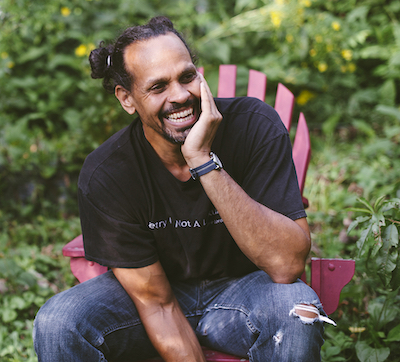
In 2015, Natasha Komoda photographed local poet Ross Gay (above) for an LP story by Brian Hartz. Since then, some of Natasha’s photos have been republished in national publications. | Photo by Natasha Komoda
That includes our photographers. Some of the images we’ve published have been shared around the world. A photo we used in a story by Brian Hartz about local poet Ross Gay has been republished in several places. About a year ago, I was reading a profile of Ross in The New York Review of Books. It was cool seeing this Bloomingtonian being revered by an internationally renowned publication. (Besides being one of the most talented people you’ll ever meet, Ross is also one of the nicest.) But then I get to the end of the story and see a familiar photo of Ross. The photo was by Natasha Komoda, one of our contributors. Then I looked closer and realized, “Hey! That’s one of the photos Natasha took for our story on Ross!”
That was quite a thrill for me; I think I was more excited about it than Natasha was. If nothing else, it validates the quality of creative talent we have in B-town.
Focus on Solutions Journalism
In addition to continuing our coverage on the topics that are most popular with our readers — the arts, outdoors, healthy living, etc. — we became a member of the Solutions Journalism Network to help us to focus even more on solutions journalism. An approach to covering critical issues, solutions journalism is rigorous, evidence-based reporting that looks at how people, organizations, and local governments are responding to problems in the community, and whether those initiatives are working. It’s an approach that is gaining momentum across the country because, among other reasons, people are interested in learning how problems can be solved.
While we had already planned on publishing fewer articles this year as we transitioned to a nonprofit, the pandemic altered our editorial calendar even more. Some of the articles our writers were working on this year became non-stories; others we couldn’t pursue because of a lack of funding. As a former (and still occasional) freelance writer myself, I know the time commitment required to write the kind of in-depth articles we feature at LP. I hate not being able to pay a fair rate to our talented contributors. The grant money mentioned above has helped lately, but it will be an ongoing struggle. Your donations and support will go directly to helping us continue to publish the stories our readers want to read.
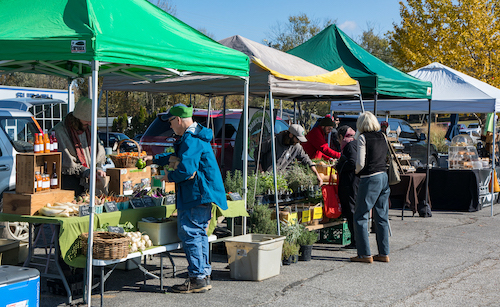
Ellen Wu wrote an article for LP this year about the People’s Market — a new farmers market in Bloomington that focuses on food justice and mutual aid — and how it was adjusting to the coronavirus pandemic. | Photo by Andrew Grodner
Some of our contributors have been willing to provide content at much lower rates or even for free, so we’ve been able to post important stories this year. I plan to write a year-end review of our work in a few weeks, but I’ll mention here that, despite the challenges, we were able to cover the most important topics of the year, including the opening of the People’s Market by Ellen Wu, the Enough Is Enough march, the protests demanding racial justice, and a list of COVID-19 resources.
Another important program we continued this year is to collaborate with more nonprofits, including other media. An example is a partnership with WFHB Local News. In August, Limestone Post contributor Diane Walker wrote an article about the residential eviction crisis brought on by the pandemic. Later that month, Diane produced an ongoing series for WFHB, titled “Eviction Crisis in Indiana,” in which she interviewed many of the people in her LP article, including Deborah Myerson, Forrest Gilmore, Jacob Sipe, and Jamie Sutton. (In September, the Centers for Disease Control and Prevention issued a halt to residential evictions to prevent the spread of the coronavirus, but the moratorium is set to end on December 31, which means the looming crisis that Diane explained extensively will likely become an issue again.)
We look forward to working more with WFHB, as well as with other media and the IU Media School.
What’s ahead at Limestone Post
Becoming a nonprofit has given us many opportunities, and we intend to work on programs that will allow us to build a stronger publication in 2021:
—pursue more solutions journalism projects
—publish more content in general, including photo essays and videos
—develop more editorial partnerships
—recruit more contributors and pay them a fair rate
—begin work on a new print edition for 2021-2022
—develop programs with local nonprofits to support the arts, outdoors, etc.
—develop a membership program for our readers
—offer sponsorships to local businesses that want to support what we do
—reach out to our readers to find out what stories they want to read
Yes, we have our work cut out for us. (I need to get back to work!) We’ll keep you posted on our progress, but in the meantime, I’ll be glad to answer any questions you might have.
Thank you for reading — and thanks again for all the support!
How you can support local nonprofit journalism
- Email me to learn more about business underwriting
- Donate to Limestone Post*
- Send us story ideas
- Become a contributor
*We are part of the AmazonSmile program, which donates 0.5% of the purchase price to each Amazon customer’s selected charitable organization. Here’s the link to our account: https://smile.amazon.com/ch/83-4440159. You can read more about the program here: https://smile.amazon.com/

